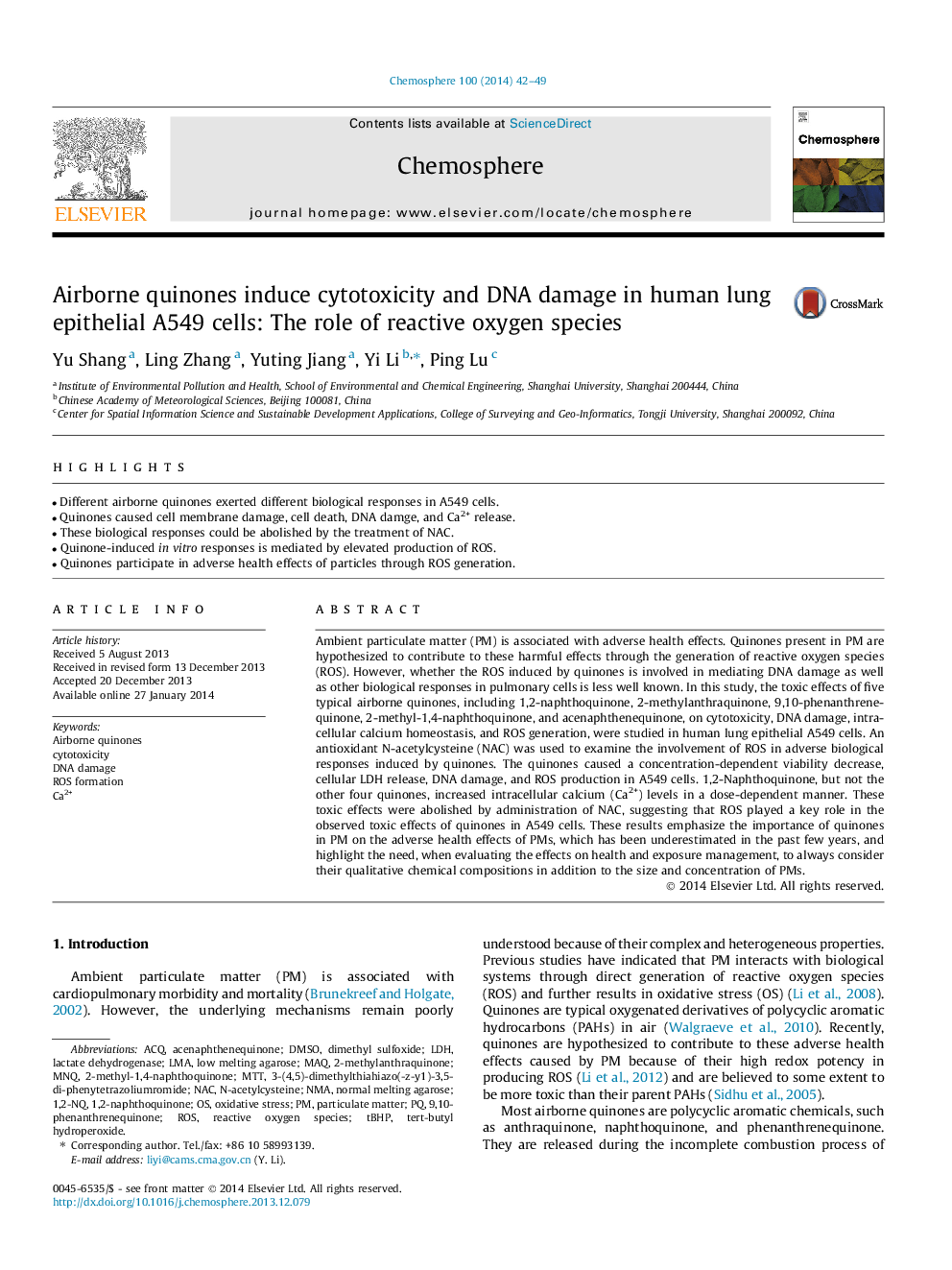| کد مقاله | کد نشریه | سال انتشار | مقاله انگلیسی | نسخه تمام متن |
|---|---|---|---|---|
| 6309453 | 1618871 | 2014 | 8 صفحه PDF | دانلود رایگان |

- Different airborne quinones exerted different biological responses in A549 cells.
- Quinones caused cell membrane damage, cell death, DNA damge, and Ca2+ release.
- These biological responses could be abolished by the treatment of NAC.
- Quinone-induced in vitro responses is mediated by elevated production of ROS.
- Quinones participate in adverse health effects of particles through ROS generation.
Ambient particulate matter (PM) is associated with adverse health effects. Quinones present in PM are hypothesized to contribute to these harmful effects through the generation of reactive oxygen species (ROS). However, whether the ROS induced by quinones is involved in mediating DNA damage as well as other biological responses in pulmonary cells is less well known. In this study, the toxic effects of five typical airborne quinones, including 1,2-naphthoquinone, 2-methylanthraquinone, 9,10-phenanthrenequinone, 2-methyl-1,4-naphthoquinone, and acenaphthenequinone, on cytotoxicity, DNA damage, intracellular calcium homeostasis, and ROS generation, were studied in human lung epithelial A549 cells. An antioxidant N-acetylcysteine (NAC) was used to examine the involvement of ROS in adverse biological responses induced by quinones. The quinones caused a concentration-dependent viability decrease, cellular LDH release, DNA damage, and ROS production in A549 cells. 1,2-Naphthoquinone, but not the other four quinones, increased intracellular calcium (Ca2+) levels in a dose-dependent manner. These toxic effects were abolished by administration of NAC, suggesting that ROS played a key role in the observed toxic effects of quinones in A549 cells. These results emphasize the importance of quinones in PM on the adverse health effects of PMs, which has been underestimated in the past few years, and highlight the need, when evaluating the effects on health and exposure management, to always consider their qualitative chemical compositions in addition to the size and concentration of PMs.
Journal: Chemosphere - Volume 100, April 2014, Pages 42-49